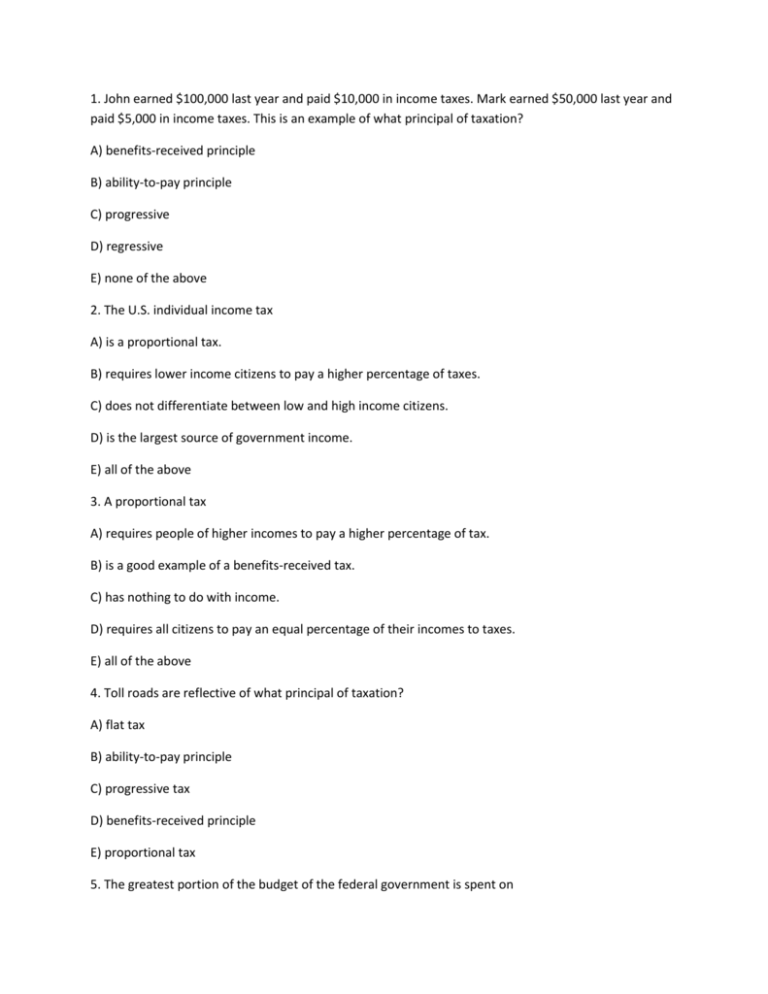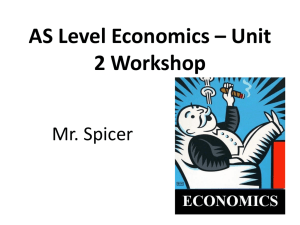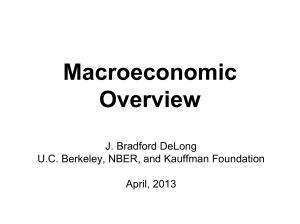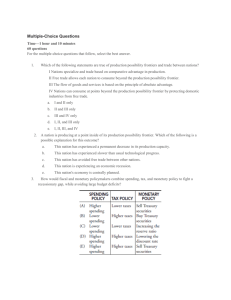file_5 - Homework Market
advertisement

1. John earned $100,000 last year and paid $10,000 in income taxes. Mark earned $50,000 last year and
paid $5,000 in income taxes. This is an example of what principal of taxation?
A) benefits-received principle
B) ability-to-pay principle
C) progressive
D) regressive
E) none of the above
2. The U.S. individual income tax
A) is a proportional tax.
B) requires lower income citizens to pay a higher percentage of taxes.
C) does not differentiate between low and high income citizens.
D) is the largest source of government income.
E) all of the above
3. A proportional tax
A) requires people of higher incomes to pay a higher percentage of tax.
B) is a good example of a benefits-received tax.
C) has nothing to do with income.
D) requires all citizens to pay an equal percentage of their incomes to taxes.
E) all of the above
4. Toll roads are reflective of what principal of taxation?
A) flat tax
B) ability-to-pay principle
C) progressive tax
D) benefits-received principle
E) proportional tax
5. The greatest portion of the budget of the federal government is spent on
A) schools.
B) entitlements such as Medicare and Social Security.
C) national defense.
D) interest on previous debt.
E) public welfare.
6. The greatest portion of the budget of state and local governments is spent on
A) schools.
B) entitlements such as Medicare and Social Security.
C) national defense.
D) interest on previous debt.
E) public welfare.
7. In a given year, the budget deficit
A) is the accumulated value of outstanding payments owed to the government.
B) has always been there and is simply a fact of life.
C) is illegal due to the balanced-budget legislation.
D) is the amount in the budget not covered by tax and other revenues.
E) all of the above
8. The “ability-to-pay” principle of taxation states that
A) people who receive more benefits from a government service should pay more taxes for it than those
who received fewer benefits.
B) government should reduce taxes during economic downturns when people have less ability to pay .
C) people with higher incomes should pay higher taxes than people with lower incomes.
D) federal, state, and local taxes should be reduced.
E) none of the above
9. Taxable income is
A) total income less deductions and exemptions.
B) earned income less property income.
C) all income other than wages and salaries.
D) wage and salary income only.
E) all earned income
10. A tax which takes a larger proportion of income from low-income groups than from high- income
groups is a
A) shifted tax.
B) regressive tax.
C) progressive tax.
D) proportional tax.
E) an ability-to-pay tax.
11. Fiscal policy refers to the power of the federal government to
A) tax and spend.
B) print money.
C) control credit.
D) all of the above
E) none of the above
12. Someone advocates using fiscal policy to stimulate the economy and reduce unemployment. Which
of the following might this person advocate to implement the fiscal policy?
A) increase federal spending
B) reduce tax rates
C) both A and B
D) neither A nor B
13. Which fiscal policy would be most likely to slow the growth of our economy?
A) higher taxes
B) increased government spending
C) lower discount rate
D) increased selling of government securities by the Open Market Committee
E) all of the above
14. Which of the following is an example of an “automatic stabilizer”?
A) welfare benefits rise as the economy contracts
B) as income rises, taxes decrease
C) unemployment benefits drop as the economy contracts
D) Congress passes legislation to increase spending during a recession
E) none of the above
15. Which of the following statements would be made by a Keynesian economist?
A) “The Fed needs to spend more time monitoring the money supply.”
B) “The key to fine-tuning the economy is properly adjusting interest rates.”
C) “The battle against recession should be fought with fiscal weapons.”
D) “Bernanke should do more.”
E) all of the above
16. Which of the following institutions is directly responsible for controlling the money supply in the U.S.
economy?
A) the Federal Reserve
B) the Department of Treasury
C) the New York Stock Exchange
D) the Federal Government
E) all of the above
17. The United States’ money supply, credit, interest rates and banking systems are primarily impacted
by
A) fiscal policy.
B) foreign policy.
C) monetary policy.
D) domestic policy.
E) all of the above
18. Which of the following would most likely slow the economy during a period of intense business
activity and rising prices?
A) an increase in the money supply
B) an increase in government spending
C) a reduction in taxes
D) a reduction in the money supply
E) none of the above
19. If the Federal Reserve bought back bonds,
A) interest rates would decrease due to an increase in the money supply.
B) inflation would likely occur.
C) interest rates would increase due to a decrease in the money supply.
D) both A and B are correct
E) both B and C are correct
20. Monetary and fiscal policy are similar because
A) both are controlled by the Federal Government.
B) both are controlled by “The Fed”.
C) both are used to reach similar goals.
D) both look to control the money supply and taxation.
E) all of the above
21. A government budget deficit occurs when government expenditures are
A) greater than government revenue.
B) less than government revenue.
C) the same as government revenue.
D) decreasing at the same time as government revenues are decreasing.
E) increasing at the same time as government revenues are increasing.
22. The public debt is
A) amount of US paper currency in circulation.
B) ratio of past deficits to past surpluses.
C) total of all past deficits minus all past surpluses, plus interest.
D) difference between current government expenditures and revenues.
E) likely to decrease in the near future.
23. The “crowding out” effect of the United States budget deficit
A) makes it less expensive for the average consumer and business to borrow money.
B) makes it more expensive for the average consumer and business to borrow money.
C) does not have an effect on the national debt.
D) keeps government spending to a minimum.
E) allows for the government to borrow money at a lower rate.
24. Fiscal policy is conducted by
A) the Federal Reserve Board.
B) individual banks.
C) the federal government.
D) private businesses.
E) consumers.
25. Cutting which of the following would be an example of expansionary fiscal policy?
A) increasing income taxes
B) increasing government spending
C) production of consumer goods
D) workers’ wages
E) interest rates
26. Which monetary policy tool is used most often by the Federal Reserve?
A) printing additional money
B) buying or selling government securities and bonds
C) raising or lowering bank reserve requirements
D) adjusting the money multiplier formula
E) adjusting the discount rate
27. Match the following statements to the proper terms.
A. fiscal policies that favor increasing government spending rather than adjusting taxes
B. a monetary policy designed to decrease activity in the economy
C. fiscal policies that favor cutting taxes rather than increasing government spending
D. policies that naturally trigger benefits to increase spending in a recession and reduce spending during
inflationary periods
E. A monetary policy designed to increase activity in the economy
ABCDEsupply-side policy
ABCDEtight money policy
ABCDEdemand-side policy
ABCDEeasy money policy
ABCDEautomatic stabilizers28. Expansionary monetary policy results in which of the following in the
short-run?
I. The money supply increases.
II. The nominal interest rate decreases.
III. The real interest rate decrease.
IV. Bond prices decrease.
A) I and II only.
B) I, II and III only.
C) I, II and IV only.
D) III and IV only.
E) IV only.
29. Which of the following monetary and fiscal policy combinations would definitely cause an increase in
aggregate demand?
Reserve Requirement : Taxes : Government Spending
A) Decrease : Decrease : Decrease
B) Decrease : Decrease : Increase
C) Increase : Decrease : Increase
D) Increase : Increase : Decrease
E) Increase : Decrease : Decrease
30. When money specifies the value of something, what function does it serve?
A) medium of exchange
B) store of value
C) unit of measurement
D) standard of payment
31. What function does money serve when you trade it for some good or service?
A) medium of exchange
B) unit of measurement
C) store of value
D) standard of payment
32. Money
A) is more efficient than barter.
B) makes trades easier.
C) allows greater specialization.
D) All of the above are correct.
33. Paper money
A) has no intrinsic value.
B) is used in a barter economy.
C) is valuable because it is generally accepted in trade.
D) Both a and c are correct
Does it Count int GDP?
Answer true if the statement is something added to the GDP, answer false if it is not.
3. The purchase of a used tractor by a farmer
A) True
B) False
4. Proceeds from Cashing in a U.S. savings bond
A) True
B) False
8. Cash received from the sale of an AT&T bond
A) True
B) False
4. Real GDP is GDP that has been adjusted for inflation.
A) True
B) False
5. Per capita GDP is GDP that has been adjusted for inflation.
A) True
B) False
7. Labor productivity has little impact upon the growth or decline of GDP.
A) True
B) False
8. If there is an increase in the real GDP, then the standard of living most likely has increased.
A) True
B) False
R. J. Reynolds Company buys control of Nabisco Brands cookies.
A) consumption
B) gross private domestic investment
C) government spending
D) not counted
11. If intermediate goods and services were included in GDP:
A) the GDP would then have to be deflated for changes in the price level
B) nominal GDP would exceed real GDP
C) the GDP would be overstated
D) the GDP would be understated
The largest component of total output is
A) government purchases
B) investment spending
C) wages
D) consumption spending
E) none of these
3. According to the data below, what is the unemployment rate?
Total Population
1,500
Population under 16 and institutionalized
360
Not in the labor force
450
Unemployed
69
Workers with part-time work who want full-time
30
10%11%8.4%6.9%14%
3. According to the data below, what is the unemployment rate?
Total Population
1,500
Population under 16 and institutionalized
360
Not in the labor force
450
Unemployed
69
Workers with part-time work who want full-time
30
10%11%8.4%6.9%14%4. According to the data below, what is the size of the labor force?
Adult population
200 million
Employed
Unemployed
Not in Labor force
125 million
8 million
67 million
200 million133 million192 million125 million5. According to the data below, what is the unmployment
rate?
Adult population
Employed
Unemployed
Not in Labor force
200 million
125 million
8 million
67 million
7%5.4%10.1%6.2%6%6. According to the data below, what is the labor-force participation rate ?
Adult population
Employed
Unemployed
Not in Labor force
200 million
125 million
8 million
67 million
66.5%72.5%68.1%61%63%
Incomplete Submission
You did not answer the following questions:
Click Ok to answer these questions.
Upload files
Incomplete Submission
You did not answer the following questions:
Click Ok to submit the assessment or Cancel to answer these questions.
Answers Saved
Your answers will be saved, but the assessment will not be submitted.
Click Ok to finish the assessment later or Cancel to continue taking the assessment.
Error
The following error occurred:
Time warning
You have minute(s) remaining for this question set.
Error
The following error occurred while submitting your answers:
Please correct the problem and try submitting again.
Time expired
Your time has expired. Submit the assessment now or you may be penalized.
Your time has expired. The assessment will be automatically submitted.
Time warning
You have minute(s) remaining.
Time expired
Your time for this question set has expired. Proceed to the next question set or submit the assessment
now or you may be penalized.
Your time for this question set has expired. You will automatically move to the next question set.
Your time for the last question set has expired. The assessment will be automatically submitted.
Maximum number of choices allowed is {0}.
1. Cost-push inflation
A) is caused by excessive total spending
B) shifts the nation’s production possibilities curve leftward
C) moves the economy inward from its production possibilities curve
D) rising costs for resources being shifted to the customer.
2. Inflation is undesirable because it
A) arbitrarily redistributes real income and wealth
B) always is cumulative; that is, creeping inflation invariably cause hyperinflation
C) always tends to make the distribution of income less equal
D) is always accompanied by a declining real output.
3. Which of the following statements best describes demand-pull inflation?
A) Demand for goods and services exceeds the short-run production capacity
B) There is an increase in the prices of production resources
C) The money supply increases relative to the economy's output
D) There is a reduced supply of production inputs
5. The increase in energy prices (though only short-term) resulting from the cut-off of oil production
from Iraq and Kuwait during the Persian Gulf War is
A) cost-push inflation
B) demand-pull inflation
C) supply-push inflation
D) price-pull inflation
9. In general, what is the relationship between the inflation rate and the unemployment rate?
A) Inflation rises as unemployment drops.
B) Inflation drops as unemployment drops.
C) Inflation falls at a slower rate than unemployment.
D) Inflation rises at a faster rate than unemployment.
10. If a person has money invested at 9 percent and the rate of inflation is 5 percent, how much return is
he or she actually making on his or her investment?
A) 14 percent
B) 4 percent
C) 9 percent
D) 1 percent
13. The natural rate of unemployment is the
A) unemployment rate experienced at the depth of the depression
B) sum of the frictional and the structural unemployment
C) unemployment rate experienced by the least-skilled workers in the economy
D) unemployment rate experienced by the most-skilled workers in the economy
1. Which action results in capital deepening?
A) moving a factory overseas where costs are
B) laying off employees when a factory is modernized
C) paying a worker to take college courses
D) policy permitting two workers to share one job
6. The aggregate demand curve:
A) is upward sloping because a higher price level is necessary to make production profitable as
production costs rise
B) is downward sloping because production costs decline as real national output increases
C) shows the amounts of expenditures required to induce the production of each possible level of real
national output
D) shows the amount of real national output which will be purchased at each possible price level
7. Other things being equal, an improvement in productivity will
A) shift the aggregate demand curve to the left
B) shift the aggregate supply curve to the left
C) shift the aggregate supply curve to the right
D) increase the price level
8. A leftward shift in the aggregate supply curve might best be explained by
A) a decrease in business taxes
B) a decrease in productivity
C) a decrease in nominal wages
D) a decrease in the price of imported resources
The equilibrium price level and level of real national output occur where
A) real national output is at its highest levels
B) exports equal imports
C) the price level is at is lowest level
D) the aggregate demand and supply curve intersect










